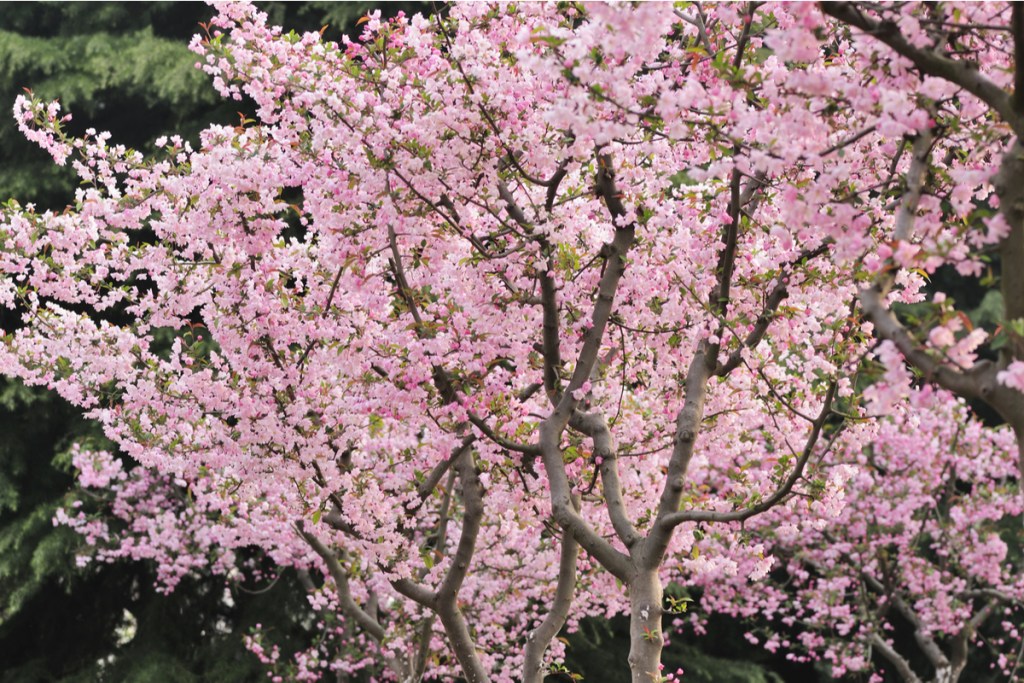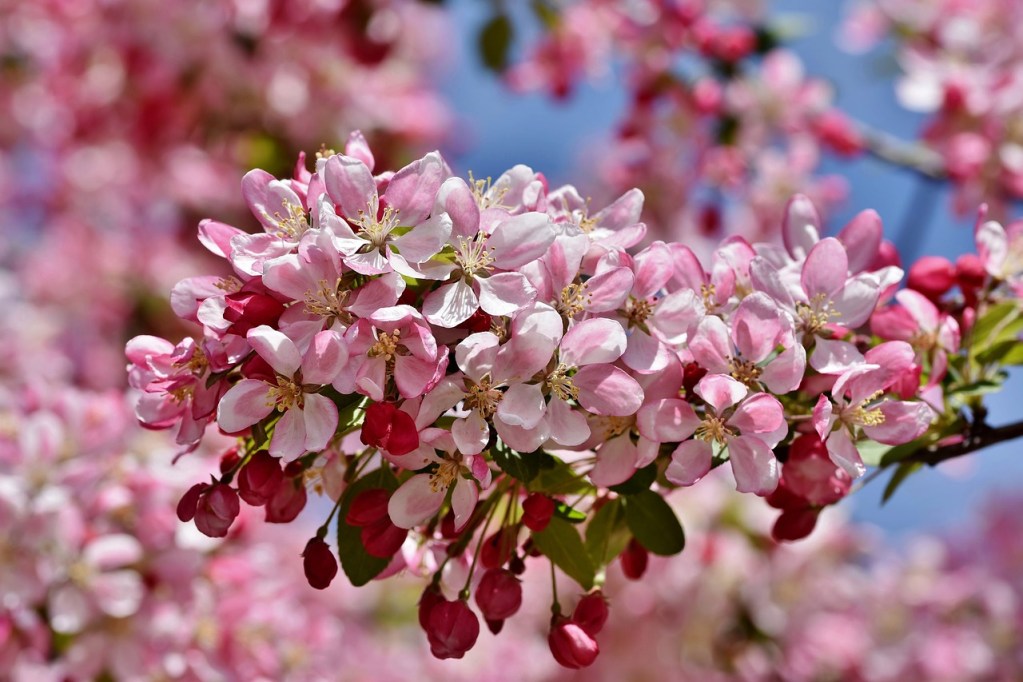There are few things that can fill space in a garden without detracting from its beauty quite like a tree. Trees are good for the environment and they can offer shade and even be a source of food. There are tons of beautiful flowering trees to choose from, but one that you may overlook is the crabapple tree. These trees are hardy in many climate zones, easy to care for, and a favorite of bees. If this sounds like a good fit for you and your yard, then keep reading to find out how to plant and care for crabapple trees.
When and how to plant crabapple trees
Although you can start crabapple trees from seeds, it’s a much quicker and easier task to grow them from saplings. You can find these saplings in nurseries or online. There are many varieties, and size can vary a lot between them. Dwarf and semi-dwarf varieties tend to grow 5 to 10 feet tall, while full-sized varieties grow from 15 to 20 feet. This is important to note, since you can plant smaller varieties closer to existing structures, while larger varieties need more space.
It’s best to plant crabapple trees when the weather is mildly cool and the ground is soft. In most regions, this makes the ideal time to plant them either spring or fall. If you have harsh winters, spring may be the better option, so you can avoid the extra work of protecting young trees from the cold. Choose a planting site with full to partial sun, average, well-draining soil, and plenty of space.
Gently remove the sapling from any pot or bag it came in. Dig a hole that’s twice as wide as the root ball and just as deep. Set the sapling in the center of the hole and fill in the soil around it. The top of the root ball may still be visible after you fill the hole, which is normal. If the sapling begins to lean or tilt, a garden stake can help support it.

Caring for crabapples
Crabapples need very little care, especially once they have established their roots. During the first year of growth, they need 1 to 2 inches of water weekly. In many cases, the rain provides enough for them, and you only need to water them if there is a dry period or if the weather is hot. After the first year, you only need to water them if there’s a drought.
Additionally, crabapple trees don’t need much in the way of supplemental nutrients. As long as the soil is average or above, they will be fine. However, if you plant them in poor soil, if the soil quality has decreased over time, or if you notice a decline in blossoms or fruit, then adding compost or slow-release fertilizer to your soil can help. If you aren’t sure about the quality of your soil, then you can get a home testing kit from most garden supply stores or online.

Pruning and pests
Crabapple trees need very little pruning. Trimming away any suckers (shoots that grow around the base of the tree) or water sprouts (thin shoots that grow from branches and point straight up) helps keep your trees healthy. Pruning can also be a good tool to keep your trees the size and shape you want. However, too much pruning can do more harm than good for crabapple trees, so it’s best to prune them occasionally rather than regularly. Winter and early spring are the best times to prune your crabapple trees.
Crabapple trees are in the same genus as other apple trees, so they’re prone to the same diseases and pests. Some varieties are more resistant than others, and it’s a good idea to check for resistances before selecting your variety. Aphids, mites, and beetles can cause damage to crabapple trees, but established trees are unlikely to see severe damage from them. Scab and cedar-apple rust are common infections, and fungi causes both. Avoid overwatering your crabapple trees, keep your trees healthy, and treat noticeable infections with fungicide.

When to harvest crabapples and how to use them
Crabapples are edible, but not every tree variety produces fruit. There are ornamental or non-fruiting varieties that grow very small fruit or no fruit at all. Additionally, crabapples aren’t to everyone’s liking. The fruit can be quite sour, so they’re better suited for making preserves, pies, or otherwise mixing with sweeter ingredients. A good rule of thumb is that small crabapples are on the sourer side, while larger ones are more palatable.
You shouldn’t eat the seeds, or pips, from inside crabapples. Much like their cousins, apples, their seeds contain cyanide. The amount of cyanide in each seed is small, so don’t panic if you miss a seed or two. However, it’s better to be safe than sorry. Crabapples begin appearing in the summer, and they are typically ripe by the end of fall.
Crabapple trees are beautiful year-round, and their easy care makes them a good fit for many gardeners. You can harvest and eat the crabapples themselves, but they’re also a wonderful food source for birds and squirrels during fall and winter. Whether you’re interested in the lovely flowers and the tart fruit, or you just want a low-maintenance source of shade, crabapple trees may be the right choice for you.



